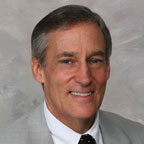
It was a horrifying story out of Arizona in early January—the shooting of Congresswoman Gabrielle Giffords and killing of six others, including a nine-year-old girl by a lone gunman. It made most Americans stop and wonder, “How could this happen?”
For those in the medical profession, it also makes us think, “What if it happened here?”
It’s not something you like to think about, but you have to be ready for it. At OSF Saint Francis Medical Center, we prepare for these worst-case scenarios regularly. If that shooting had happened here, we are confident we have the same highly-skilled physicians and nurses, as well as the facility to handle such an emergency.
As the only Level I Trauma Center in our 18-county region, we are required to have surgeons, anesthesiologists and in-house physicians (called intensivists) in house and on duty 24 hours a day, seven days a week, in addition to an extensive staff of nurses and advanced practice nurses. With 168 residents through our programs with the University of Illinois College of Medicine at Peoria, we have access to the most highly-trained staff of physicians at all times.
In fact, one of the neurosurgeons at the Illinois Neurological Institute trained at the same Arizona facility Congresswoman Giffords was taken to, and with the doctors who treated her. Can we compete with the care given in bigger cities? Absolutely. Our staff trains regularly with the best and the brightest around the world across a multitude of subspecialties and services, such as stroke, movement disorders, epilepsy, Parkinson’s disease, sleep disorders and more. There’s even a rehabilitation team in place to work with the patients, returning them to their lives as quickly as possible.
The care for those injured would typically begin in the field through the network of EMS teams and other first responders with whom we work on a daily basis as the coordinating hospital. Our Life Flight helicopters are the busiest medical air ambulance service in Illinois, serving the entire region from I-80 down to Springfield and beyond.
When it comes to an emergency situation, time is of the essence. It’s important to get medical intervention to the patient quickly. We work closely with regional affiliate hospitals, doctors and EMS programs on all levels of emergency medicine, including our cardiac, neurological and stroke teams. Our Heart 777 protocol allows for the fastest door-to-balloon times in the area. Because of the communication and transportation system in place, medical interventional times are often significantly faster than national averages.
OSF Saint Francis’ state-of-the-art emergency department, with two trauma bays and separate areas for adults and children, has the ability to expand from 55 to 75 beds at a moment’s notice in the event of a major disaster. And when a child is involved, as was the case in Arizona, the staff at Children’s Hospital of Illinois has 117 subspecialists on hand to deal with whatever the situation is.
It’s not only staff, but also infrastructure that must be in place when an emergency strikes. That is why the Sisters have always acknowledged our need to have the surgical suites and the latest in MRI, CT and other technology necessary to treat our patients, no matter what the emergency.
What if it happened here? Are we prepared? It need not be an extreme case like the shooting rampage in Arizona. The February blizzard showed our medical staff can rise to the occasion of any emergency.
We have written plans in place and practice what is written. During the blizzard, OSF Saint Francis staff—not only doctors and nurses, but facilities and maintenance crews, food service staff and housekeepers—kept patients safe and well-cared for until the worst had passed.
The medical world is 24/7 and we must be ready. We don’t have the option of closing our doors.
Central Illinois can rest assured that we take these situations seriously. While you never want to find that national spotlight shining on you in the middle of a natural disaster or other emergency situation, it’s good to know that we have the staff, facility and infrastructure in place if it did happen here. iBi

